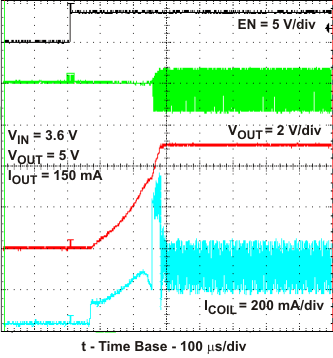SLVSAO4C December 2010 – June 2020 TPS61240-Q1
PRODUCTION DATA.
- 1 Features
- 2 Applications
- 3 Description
- 4 Revision History
- 5 Pin Configuration and Functions
- 6 Specifications
- 7 Detailed Description
- 8 Application and Implementation
- 9 Power Supply Recommendations
- 10Layout
- 11Device and Documentation Support
- 12Mechanical, Packaging, and Orderable Information
Package Options
Mechanical Data (Package|Pins)
- DRV|6
Thermal pad, mechanical data (Package|Pins)
- DRV|6
Orderable Information
8.2.3 Application Curves
Table 3. Table of Application Curves
| Figure | ||
|---|---|---|
| Waveforms | Output voltage ripple, PFM mode, IOUT = 10 mA | Figure 10 |
| Output voltage ripple, PWM mode, IOUT = 150 mA | Figure 11 | |
| Load transient response, VIN, 3.6 V, 0 mA to 50 mA | Figure 12 | |
| Load transient response, VIN, 3.6 V, 50 mA to 200 mA | Figure 13 | |
| Line transient response, VIN, 3.6 V to 4.2 V, IOUT = 50 mA | Figure 14 | |
| Line transient response, VIN, 3.6 V to 4.2 V, IOUT = 200 mA | Figure 15 | |
| Startup after enable, VIN, 3.6 V, VOUT = 5 V, Load = 5 kΩ | Figure 16 | |
| Startup after enable, VIN, 3.6 V, VOUT = 5 V, Load = 16.5 kΩ | Figure 17 | |
| Startup and shutdown, VIN, 3.6 V, VOUT = 5 V, Load = 16.5 kΩ | Figure 18 |
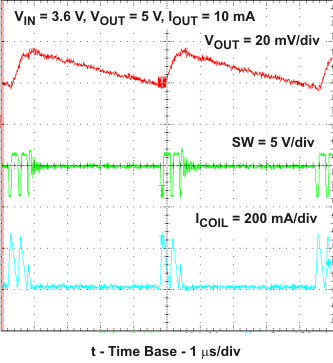
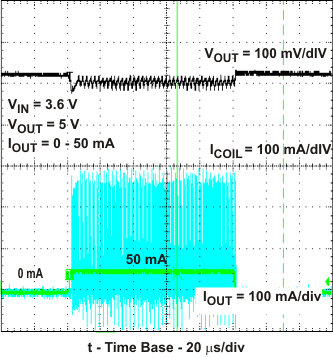
0 mA to 50 mA and 50 mA to 0 mA
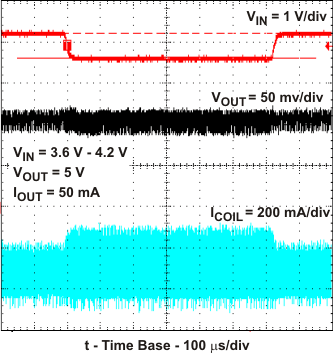
3.6 V to 4.2 V at 50 mA Load
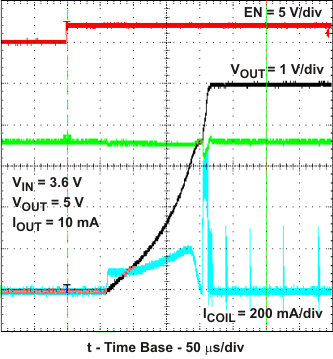
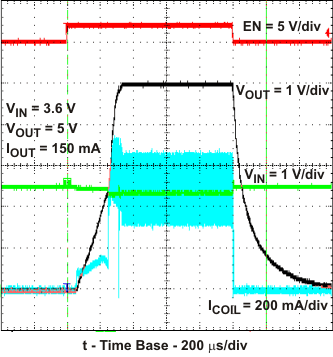
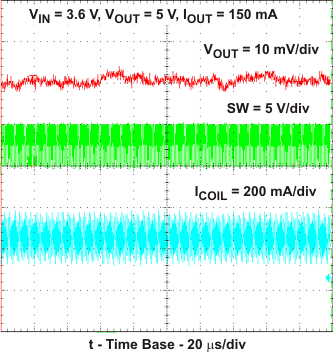
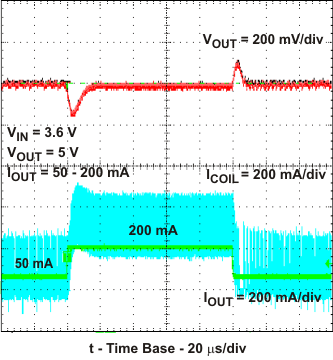
0 mA to 200 mA and 200 mA to 0 mA
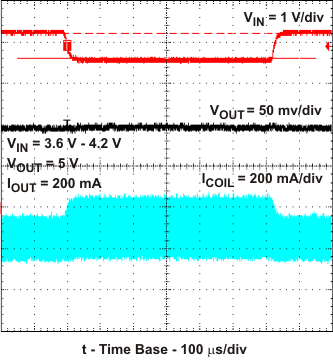
3.6 V to 4.2 V at 200 mA Load
